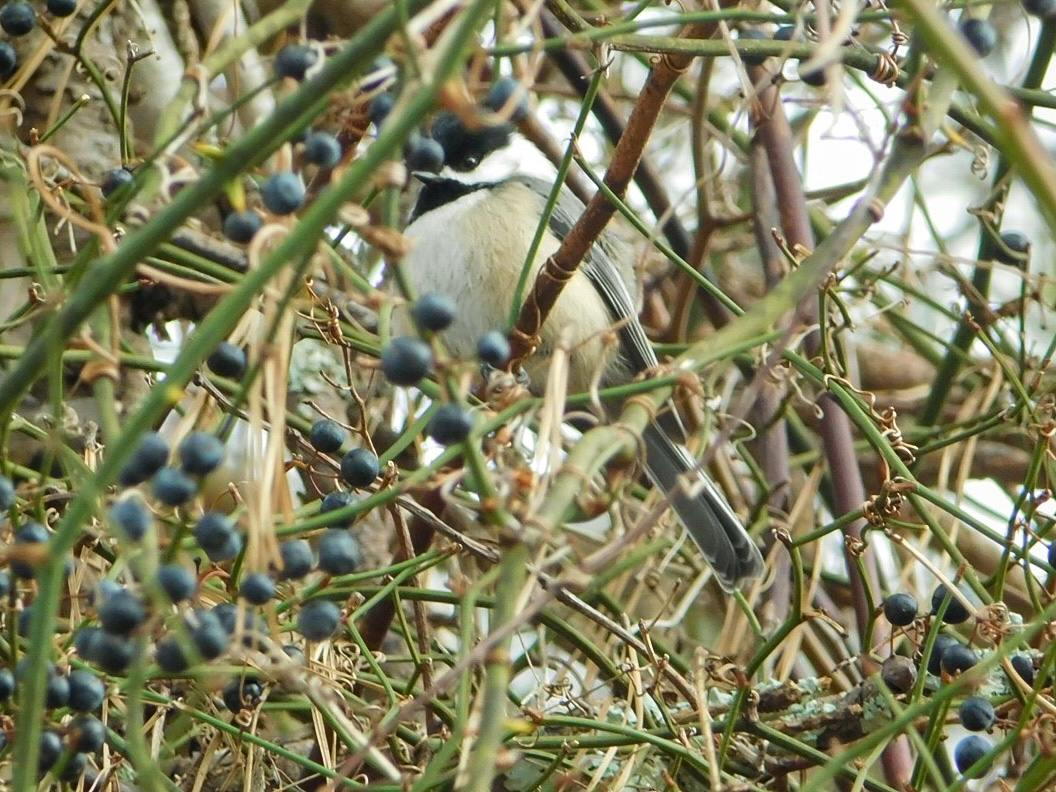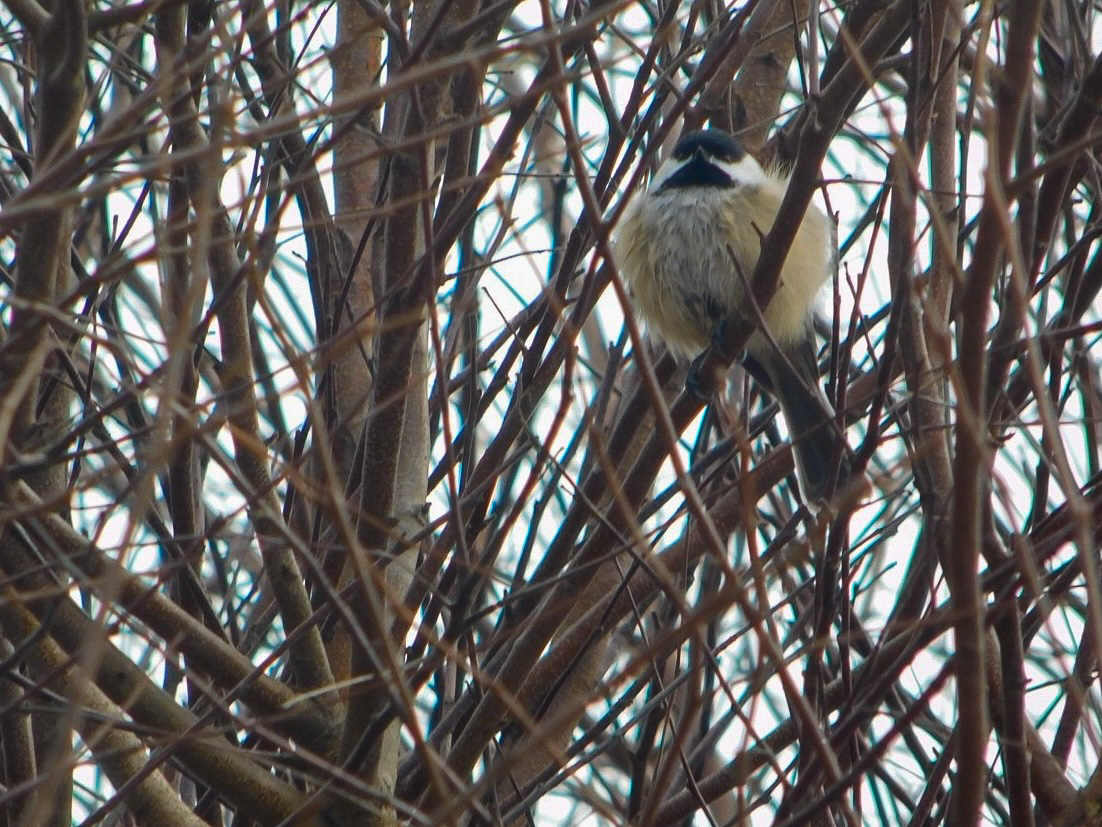Campus Critter Spotlight: Black-capped Chickadee
by Jordyn Pimental

General Information
Very tiny, these chickadees can be spotted by their black cap, gray body, white underbelly, and the white stripes on their faces. I’ve always observed these birds in groups, where there’s one there are often many, similar to last week's song sparrows. Although small, according to the American Bird Conservancy or the ABC, they are incredibly tough, surviving freezing winters after stashing seeds to get them through, then lowering their body temperatures to go into a controlled hypothermia that keeps them alive. Black-capped Chickadees are also the state bird of Massachusetts, which is a surprise to many.
Behavior
Aside from seeds, their main diet in the cold months, these birds will need nearly anything they can find from berries to insects. During the warmer months, you may find that they visit very close to home, as the American Bird Conservancy states, they tend to stick to suburban areas even commonly nesting in birdhouses. The Consverency also informs that a common nesting place for them is dead wood so as to not alert predators of their inhabitance, making these birds very smart. Unlike other birds I have reported on it is theorized that Black-Capped Chickadees actually have decent memories, particularly they learn more each year as time goes on.

Signature Song
Chickadees are named for their song, their call sounding like “dee dee” to some. If someone were to play their most well-known two-note call most would recognize it; it is a staple in picnic background noise. The ABC reported they have up to 15 different calls that mean a variety of things from predators being near to being in search for food.
The American Bird Conservancy reports that Black-capped Chickadees are at risk, similar to song sparrows due to habitat loss. Existing in suburban areas can bring many dangers for these birds. Continue environmentally conscious actions and make the most sustainable choices you can to help chickadees and other threatened species.

| NOTE FROM THE WRITER: Thank you so much for reading! Tune in next time to continue reading more, as I continue looking into the top ten bird species(in no particular order) that, according to Merlin Bird ID, currently reside in and around 4C’s. To suggest a species(of any kind of animal) that you’ve spotted around campus to be reported on in the future feel free to send an email to [email protected]|
Categories: Featured, Around Campus